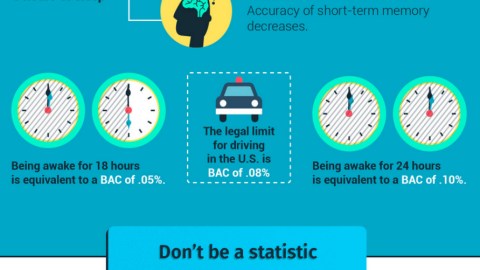Infographic: Drowsy Driving Can Be Just as Dangerous as Drunk Driving

Last month, I wrote in this space about the dangers associated with sleep disorders, in particular how we as a society gloss over our very real need to catch some shut-eye. You’ll rarely, if ever, meet anyone who would deny that starving oneself is a problematic and unhealthy practice. Yet we, for whatever reason, downplay our need for sleep and treat deprivation like an innocuous inconvenience. Heck, in college pulling an all-nighter is often considered a badge of honor, a rite of passage.
The truth is insomnia and sleeplessness lead to some very dire consequences, not the least of which is the inherent risk of operating two tons of heavy machinery while dealing with the effects. As the infographic below conveys, drowsy driving is no better than drunk driving. At least 100,000 auto collisions per year can be linked to it and over 70,000 people are injured annually because of it.
And like driving drunk, it’s totally avoidable.
Rather than risk injury, damage, or death, consider taking some of the recommended approaches to staving off the effects of drowsy driving. Caffeinate yourself. Take a quick nap on the side of the road. Always wear your seatbelt and take regular breaks when driving for long stretches at a time.
But most importantly: Start valuing your daily sleep. If you’re averaging below six hours a day, you’re no better off than someone suffering a dangerous eating disorder. For your safety and the safety of others, make an effort to catch all necessary Z’s before putting the keys in the ignition.

Source: CJ Pony Parts (h/t – Anum Yoon)
Below, sleep psychologist Shelby Harris gives a quick crash course on the basics of healthy sleep:




